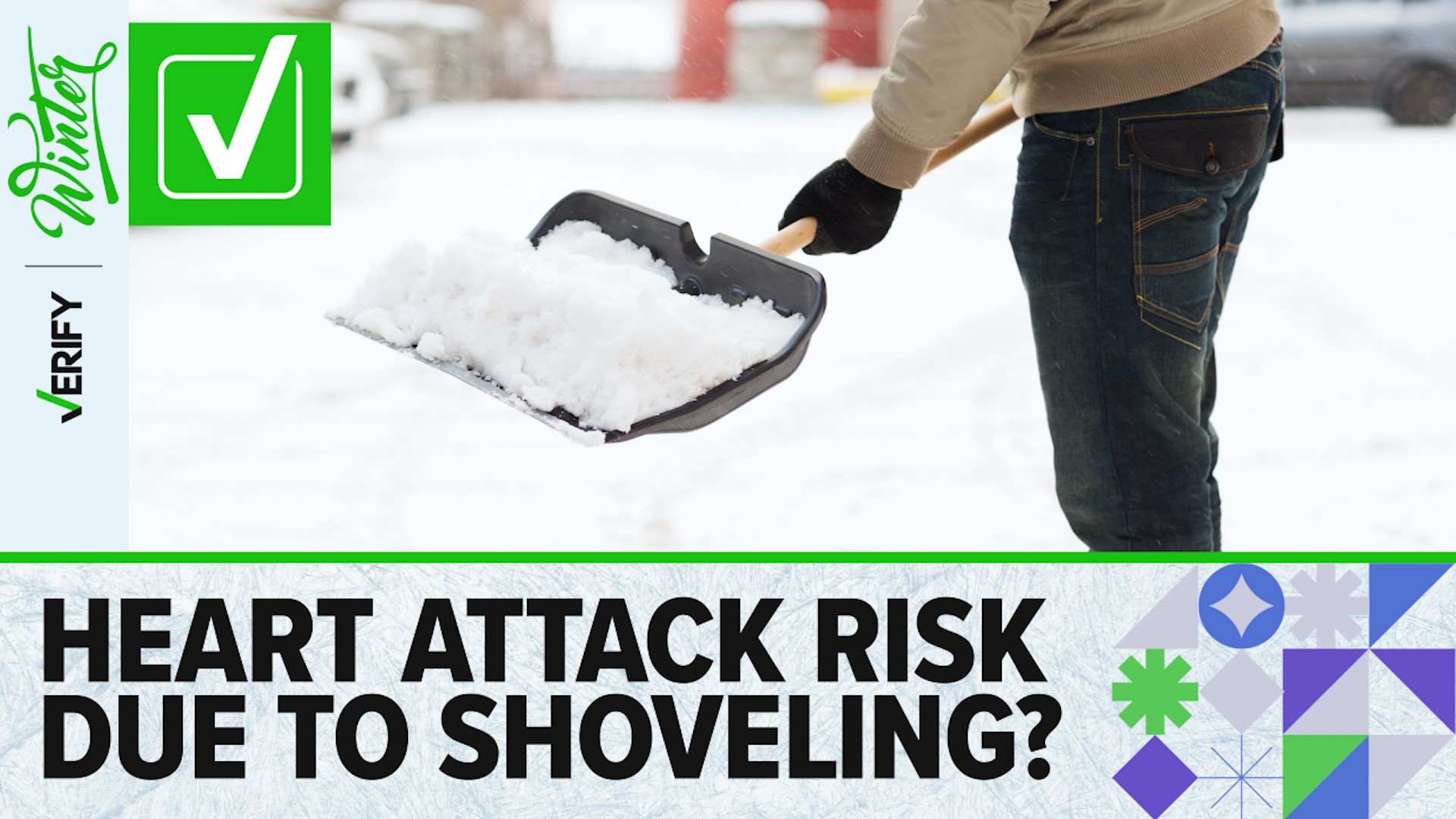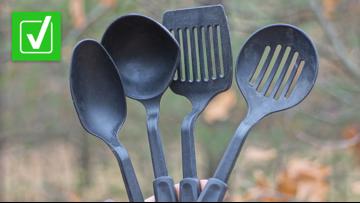During the winter months, many people spend snowy mornings shoveling their sidewalks and driveways.
But could this activity have dangerous consequences for your health? Some people on social media warn that shoveling snow can increase your risk of a heart attack.
THE QUESTION
Can shoveling snow increase your risk of a heart attack?
THE SOURCES
- The American Heart Association
- The Cleveland Clinic
- Marc Samsky, M.D., cardiologist and assistant professor at Yale School of Medicine
- Kerry Stewart, M.D., cardiologist and professor at Johns Hopkins University School of Medicine
THE ANSWER
Yes, shoveling snow can increase your risk of a heart attack. People with underlying health conditions and those who don’t exercise regularly have a higher risk of suffering from a heart attack while shoveling, medical experts say.
WHAT WE FOUND
Snow shoveling is among the strenuous physical activities that can place extra stress on a person’s heart, increasing the risk of a heart attack or sudden cardiac arrest, according to the American Heart Association (AHA).
“Numerous scientific research studies over the years have identified the dangers of shoveling snow for people with and without previously known heart disease,” the AHA said.
Both the exertion of shoveling snow and the conditions under which you’re shoveling it can be hard on your heart, the Cleveland Clinic and other experts say.
“The sudden increase in blood pressure and heart rate puts a lot of strain on your heart,” cardiologist Marc Samsky, M.D., told VERIFY. “That’s compounded by the cold air, which can also cause your blood vessels to constrict and increase your blood pressure, and increase the strain on your heart.”
While shoveling snow can place extra stress on any person’s heart, the risk of a heart attack is higher for people with certain health conditions and other risk factors.
They include people with existing heart disease, people with high blood pressure or high cholesterol, people who are obese or have other cardiovascular risks such as a sedentary lifestyle, people with diabetes, people who are current or former smokers, and people who have previously had a heart attack or stroke.
People with these conditions and risk factors, along with those who have had bypass surgery or coronary angioplasty, should not shovel snow, Barry Franklin, Ph.D., an AHA fellow and expert on the science behind cardiovascular risks of snow shoveling, said.
Experts say people who are relatively healthy and exercise regularly are at a lower risk of a heart attack while shoveling snow.
“If someone works out regularly and is free of cardiac risk factors, their...risk is lower than someone who has high risk factors and doesn’t work out,” cardiologist Kerry Stewart, M.D., said.
To decrease your risk of a heart attack or cardiac event while shoveling snow, experts recommend shoveling periodically during the storm, taking frequent breaks and staying hydrated.
The American Heart Association also recommends pushing the snow with a shovel rather than physically lifting and throwing it.
Though it’s generally less intense to use a snow blower than a shovel, some studies have shown there is still an increased risk of heart attacks among people using automatic snow blowers. Pushing the heavy snow blower can also raise your heart rate and blood pressure quickly, according to the AHA.












